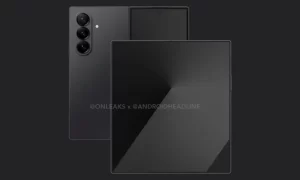Google is on the cusp of revolutionizing AI-driven creativity and development with its latest innovations: Imagen 3 and Gemini 1.5 Pro. Imagen 3 is Google’s most advanced text-to-image AI model, capable of generating highly detailed and realistic images from textual descriptions.
Meanwhile, Gemini 1.5 Pro offers developers a significant boost in context window size, enabling more extensive and complex data processing. This article delves into the recent developments surrounding these cutting-edge tools and their potential implications for users and developers alike.
Last month, Google unveiled Imagen 3, its most sophisticated text-to-image AI model to date. Initially, only a select few were granted access, but Google appears ready to broaden the user base.
An APK teardown, a process that examines the code within Android apps to predict upcoming features, has provided clues about Imagen 3’s future availability. Though these features may not always make it to public release, the teardown of the Google app for Android (beta version 15.25.31.29) revealed a flag that, when activated, triggers a popup titled “First look: Imagen 3.” This popup invites Gemini Advanced subscribers to access Imagen 3 early, detailing the new and updated features included in the latest version of the AI tool.
While it’s not explicitly clear if the model uses Imagen 3, the evidence suggests that Google is allowing more users to experiment with its advanced image generator.
In parallel, Google has announced significant updates for developers using Gemini. The Gemini 1.5 Pro now features a 2 million token context window, significantly enhancing its ability to process vast amounts of data. This update allows for the analysis of two hours of video, 22 hours of audio, over 60,000 lines of code, and more than 1.4 million words. After a period of private preview, this capability is now available to all developers.
The expanded context window is particularly beneficial for complex tasks such as identifying bugs in extensive codebases, extracting information from large research libraries, and analyzing extensive audio or video recordings. Current users include a fast food retailer, a financial institution, an insurer, and a sports company analyzing player performance.
Additionally, Google has introduced Gemini 1.5 Flash, featuring a 1 million token context window, low latency, and competitive pricing. Ideal for retail chat agents, document processing, and research tasks, it offers a 60x larger context window and up to 4x lower input price compared to GPT-3.5 Turbo.
Imagen 3, now available in preview for Vertex AI customers with early access, boasts faster generation times, improved prompt understanding, photorealistic group images, and enhanced text rendering within images. These advancements mark a significant step forward in AI capabilities, promising to empower users and developers with more powerful and versatile tools.





